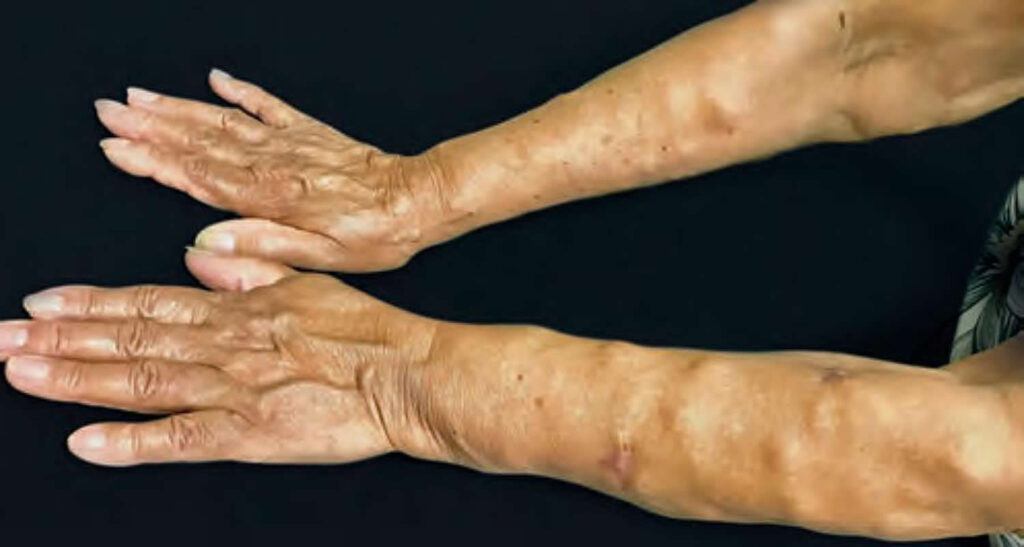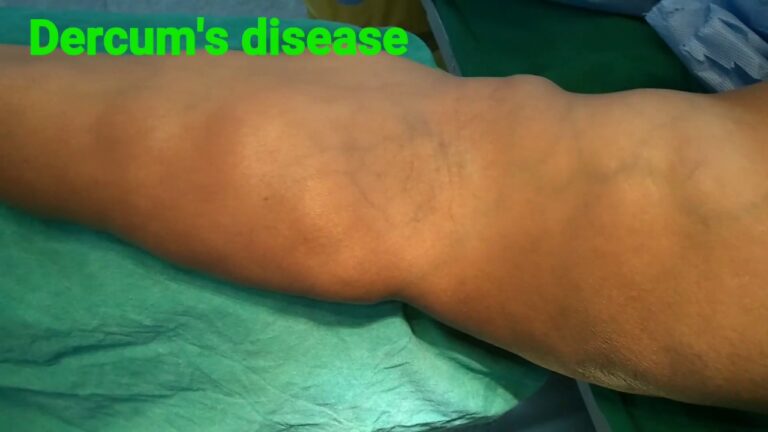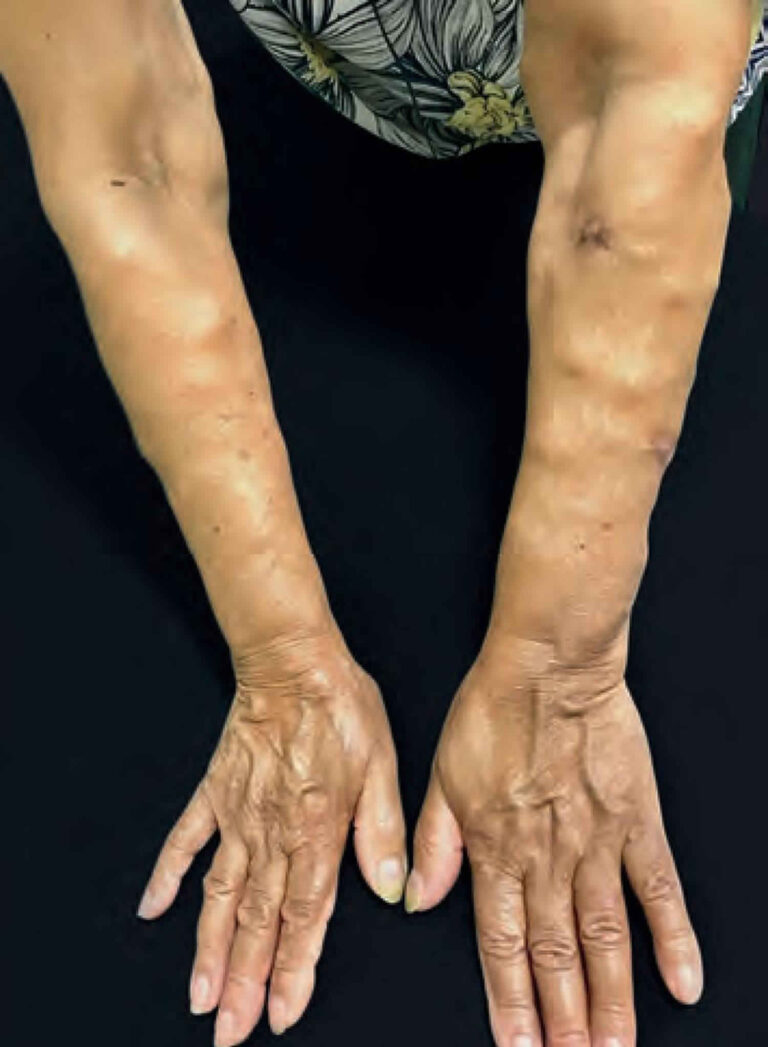WHAT IS DERCUM’S DISEASE?
Dercum’s disease is a rare disorder that causes painful growths of fatty tissue known as lipomas. It is also known as adiposis dolorosa. This disorder generally affects the torso, upper arms, or upper legs.
According to a review in the Orphanet Journal of Rare Diseases, Dercum’s disease is anywhere from five to thirty times more common in women. This wide range is an indication that Dercum’s disease is not well understood. Despite this lack of knowledge, there is no evidence that Dercum’s disease affects life expectancy.
WHAT ARE THE SYMPTOMS?
The symptoms of Dercum’s disease could vary from person to person. However, almost all people with Dercum’s disease have painful lipomas that grow gradually.
Lipoma size could range from that of a small marble to a human fist. For some people, the lipomas are all of the same sizes, while others have several sizes.
Lipomas related to Dercum’s disease are often painful when pressed, possibly because those lipomas are putting pressure on a nerve. For some people, the pain is persistent.
Other symptoms of Dercum’s disease might include :
- Weight gain
- Swelling that comes and goes in different parts of the body, usually the hands
- Fatigue
- Weakness
- Depression
- Problems with thinking, concentration, or memory
- Easy bruising
- Stiffness after laying down, particularly in the morning
- Headaches
- Irritability
- Difficulty sleeping
- Rapid heart rate
- Shortness of breath
- Constipation
WHAT CAUSES IT?
Doctors are not sure what causes Dercum’s disease. In most cases, there does not seem to be an underlying cause.
Some researchers think it might be an autoimmune disorder, which is a condition that causes your immune system to mistakenly attack healthy tissue. Others believe it is a metabolic problem associated with not being able to properly break down fat.
HOW IS IT DIAGNOSED?
There are no standard criteria for diagnosing Dercum’s disease. Instead, your doctor will probably focus on ruling out other possible conditions, such as fibromyalgia or lipedema.
To do this, your doctor may biopsy one of your lipomas. This involves taking a tiny tissue sample and looking at it under a microscope. They might also use a CT scan or MRI scan to help them make a diagnosis.
If you are diagnosed with Dercum’s disease, your doctor might classify it based on the size and location of your lipomas. These classifications include :
- Nodular – Large lipomas, generally around your arms, back, abdomen, or thighs
- Diffuse – Small lipomas that are common
- Mixed – A combination of both large and small lipomas
HOW IS IT TREATED?
There is no cure for Dercum’s disease. Instead, treatment generally focuses on pain management using :
- Prescription pain relievers
- Cortisone injections
- Calcium channel modulators
- Methotrexate
- Infliximab
- Interferon alpha
- Surgical removal of lipomas
- Liposuction
- Electrotherapy
- Acupuncture
- Intravenous lidocaine
- Nonsteroidal anti-inflammatory drugs
- Staying healthy with anti-inflammatory diets and low-impact exercises like swimming and stretching
In many cases, people who have Dercum’s disease benefit the most from a combination of these treatments. Consider working with a pain management specialist to find the safest combination that is most effective for you.
LIVING WITH DERCUM’S DISEASE
Dercum’s disease could be hard to diagnose and treat. Chronic, severe pain could also lead to problems such as depression and addiction.
If you have Dercum’s disease, consider working with a pain management specialist and a mental health professional for added support. You may also find an online or in-person support group for people with rare diseases.
If you or anyone you know is suffering from dercum’s disease, our expert providers at Specialty Care Clinics will take care of your health and help you recover.
Call 469-545-9983 to book a telehealth appointment for an at-home check-up.




